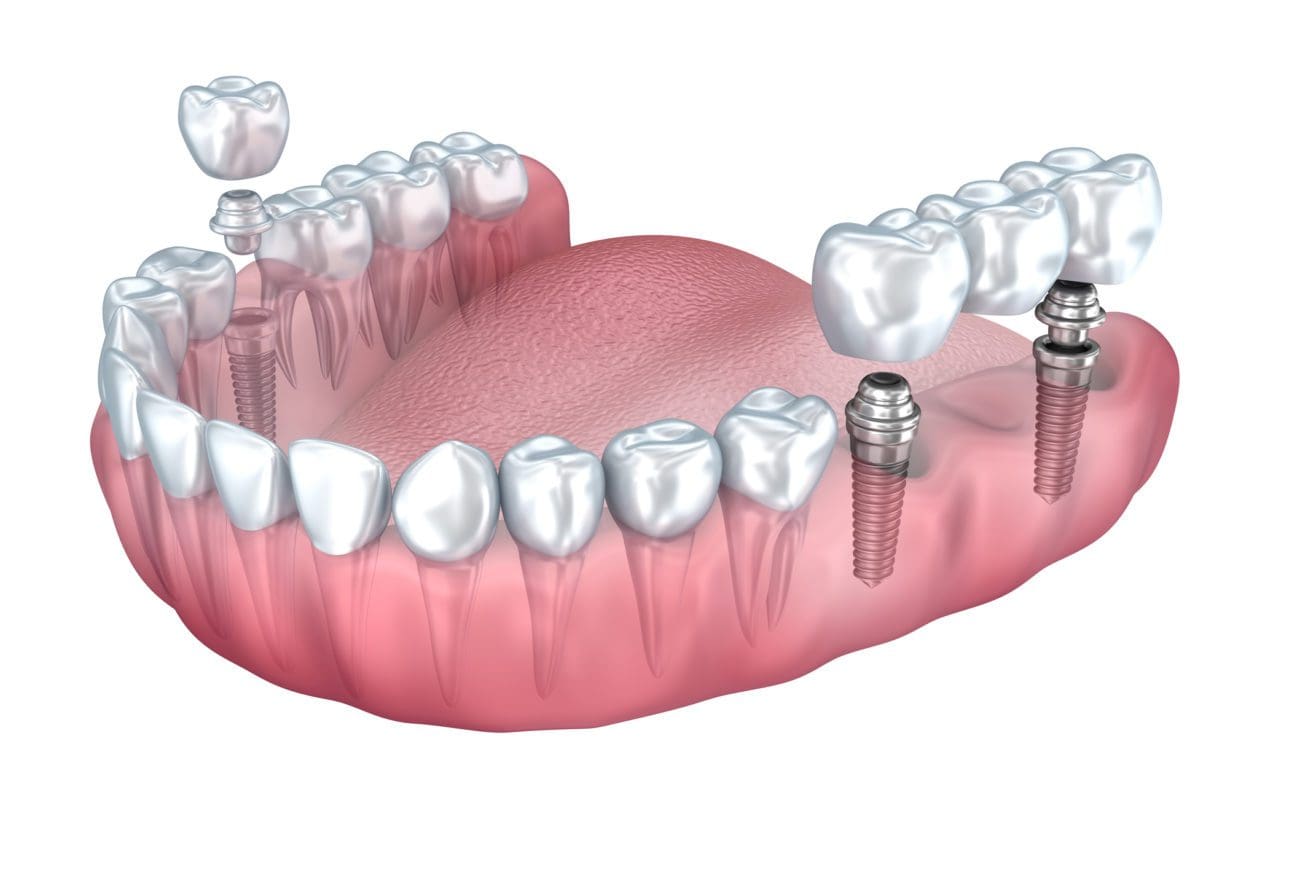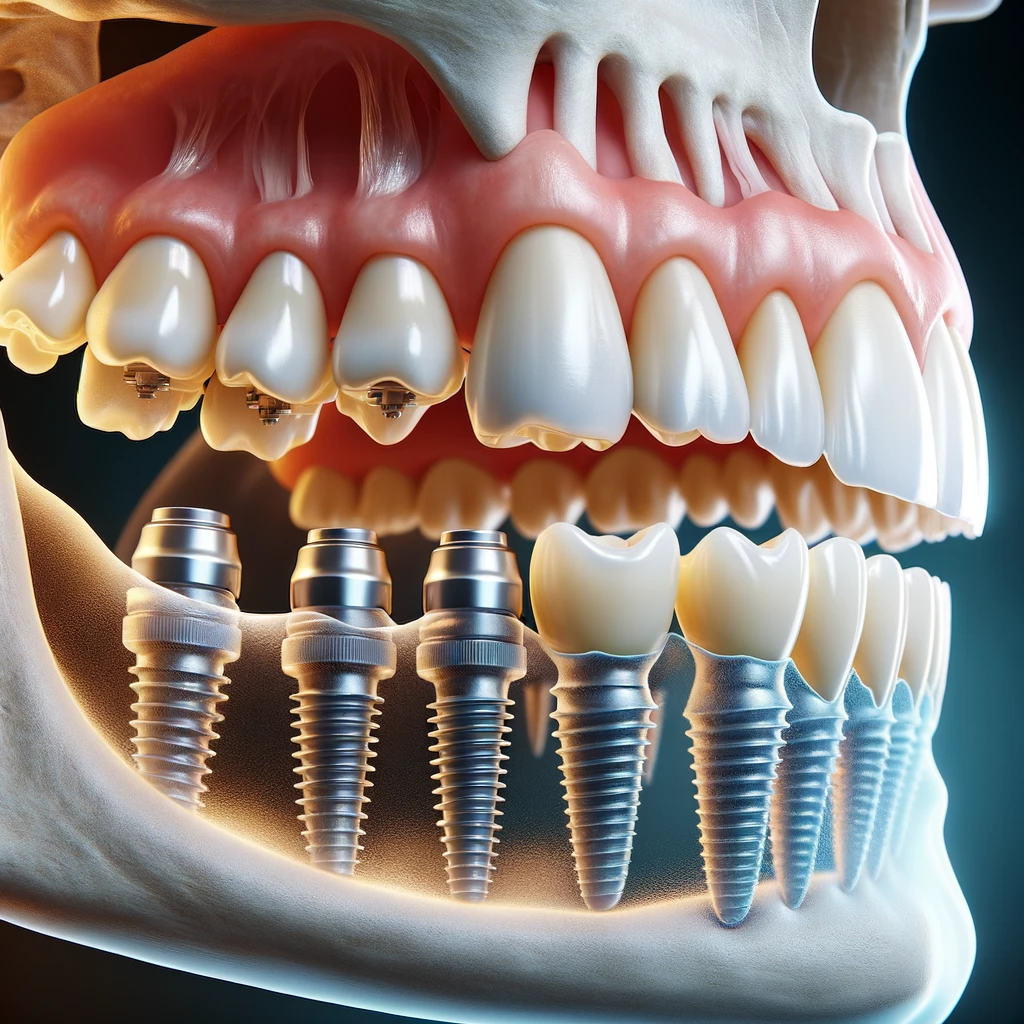Little Known Facts About Dental Sense.
Little Known Facts About Dental Sense.
Blog Article
The Main Principles Of Dental Sense
Table of ContentsUnknown Facts About Dental Sense9 Simple Techniques For Dental SenseNot known Factual Statements About Dental Sense Facts About Dental Sense Uncovered
are clinical tools operatively implanted right into the jaw to bring back an individual's ability to eat or their look. They supply support for man-made (phony) teeth, such as crowns, bridges, or dentures. When a tooth is lost as a result of injury or condition, an individual can experience complications such as quick bone loss, malfunctioning speech, or modifications to eating patterns that lead to pain.Dental dental implant systems are composed of a dental implant body and dental implant abutment and may likewise consist of a joint addiction screw. Front tooth filling. The oral implant body is operatively placed in the jawbone instead of the tooth's origin. The oral implant abutment is usually attached to the dental implant body by the joint addiction screw and prolongs via gums right into the mouth to sustain the affixed artificial teeth
(https://issuu.com/dentalsense1)Structure of The Dental Implant System picking dental implants, speak with your oral company regarding the prospective advantages and risks, and whether you are a candidate for the procedure. Points to think about: Your total wellness is an important aspect in determining whether you are an excellent prospect for dental implants, how much time it will require to recover, and for how long the implant might stay in place.
Smoking may influence the healing process and decrease the lasting success of the implant. The recovery process for the implant body might take several months or longer, throughout which time you commonly have a momentary joint in location of the tooth. the dental implant procedure: Thoroughly follow the dental health guidelines offered to you by your dental supplier.
Top Guidelines Of Dental Sense
Implant failing can cause the requirement for one more medical procedure to deal with or replace the dental implant system. Recovers the ability to chew Recovers aesthetic look Aids keep the jawbone from shrinking as a result of bone loss Maintains the wellness of the bordering bone and gums Aids maintain adjacent (close-by) teeth steady Enhances quality of life Damages to bordering all-natural teeth during implant positioning Injury to the surrounding cells during surgical treatment, such as sinus perforation Injury throughout surgical treatment (for instance, fracture of surrounding jawbone) Inadequate feature, such as seeming like the teeth do not attack together usually A feeling that the tooth is loosened or turning in position arising from an abutment screw loosening up Implant body failing (looseness of the dental implant body) due to systemic infection, which may be most likely in patients with unrestrained diabetics issues because of regional infection in bone and gum tissues supporting the implant body as a result of delayed recovery, which may be a lot more most likely in individuals who smoke Trouble cleaning the gums around the dental implant, resulting in poor dental health Unattended periodontal condition Post-surgical feeling numb because of nerve impingement or damages Always inform healthcare providers and imaging technicians that you have oral implants before any type of magnetic vibration imaging (MRI) or x-ray treatments.
FDA is not familiar with any type of damaging occasions reported for MRI or x-ray treatments with dental implants. Oral implants systems are generally constructed from products that adhere to global agreement standards of the International Organization for Standardization (ISO) or ASTM International. These requirements have information of what makes a secure material.

A dental implant is a structure that changes a missing tooth. With screw-like tools, the cosmetic surgeon inserts a dental implant into the jawbone, and it acts as an anchor for a fabricated tooth, called a crown. A device called an abutment attaches the man-made tooth to the dental implant. The crown is custom-made to fit the person's mouth and match the color of their teeth.
Some Known Incorrect Statements About Dental Sense
Some people are not qualified for oral implant surgical treatment. It is for dental specialists to run on individuals with: severe illnessuncontrollable metabolic diseasebone or soft cells condition or infectionIf these issues are solved, an individual can have the surgical treatment. In, oral surgeons avoid operating individuals with: If people with any of the above undertake dental implant surgical treatment, there is a greater danger of the implant failing.

Oral dental implant surgical have a peek at these guys treatment is a customized process. It's not the very same for every person. The adhering to gives a general review of what you can expect your dental professional, dental cosmetic surgeon, periodontist or prosthodontist to do: Position the implant surgically. Offer you time to recover. Affix the blog post and last crown, bridge or denture.
Next, your specialist will very carefully place the oral implant right into your jaw. Your specialist will rearrange your periodontals and close the cut with stitches. If your dental implant is near the front of your mouth, your dental practitioner will certainly make a momentary tooth for you to put on up until you heal. In this way, you will not have a space in your smile while you recover.
A Biased View of Dental Sense
Throughout the healing stage, your jawbone must fuse to the dental implant. This procedure can take anywhere from three to 9 months.
When your dental implant heals, your dental professional can affix the abutment (small connector post) and your last restoration (crown, bridge or denture). This generally takes about one hour to finish and may require a 2nd minor surgical treatment. You shouldn't feel any pain throughout your dental implant treatment since your supplier will certainly make use of drug to numb your periodontals.
Report this page